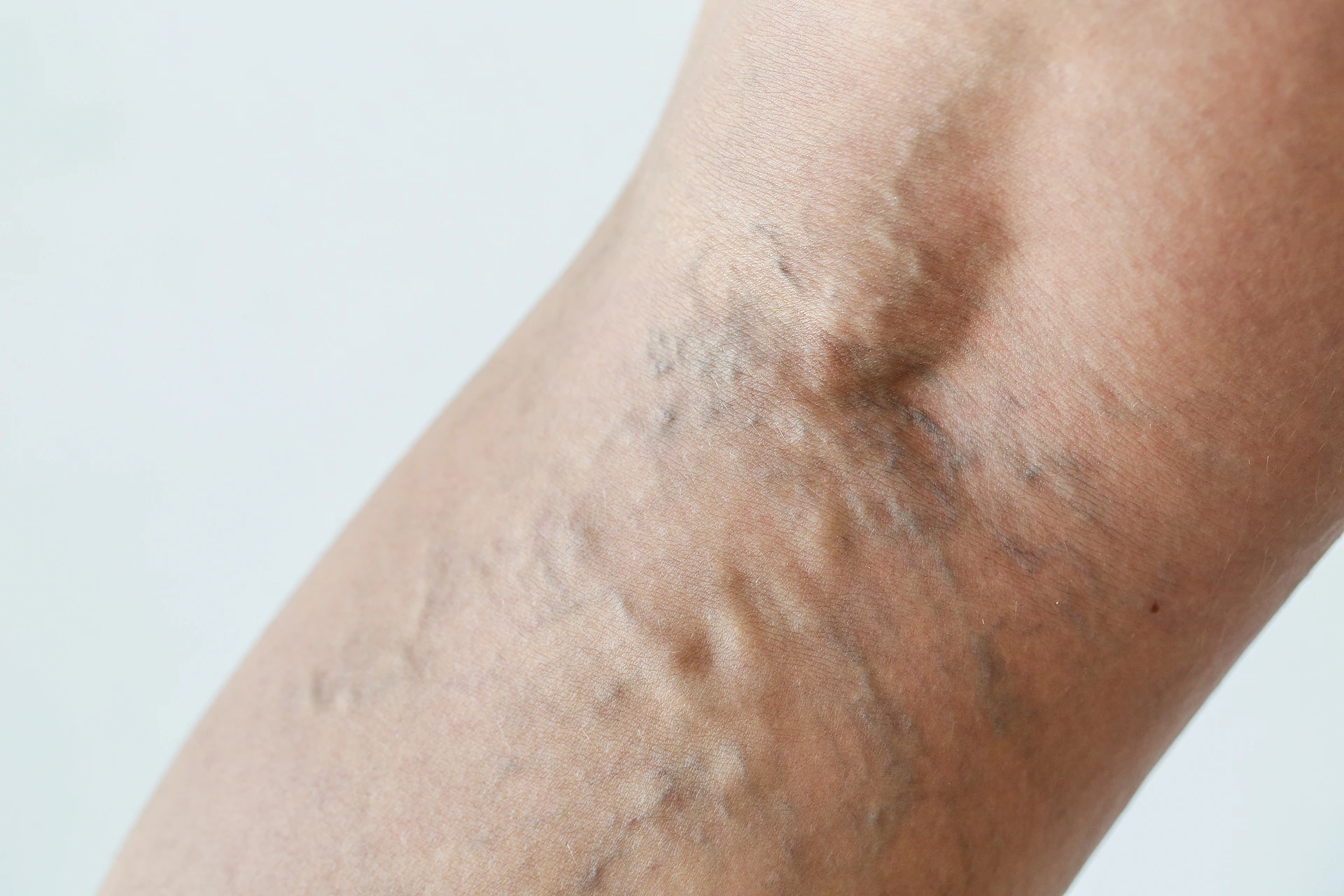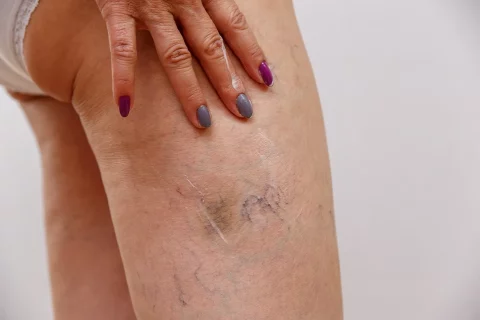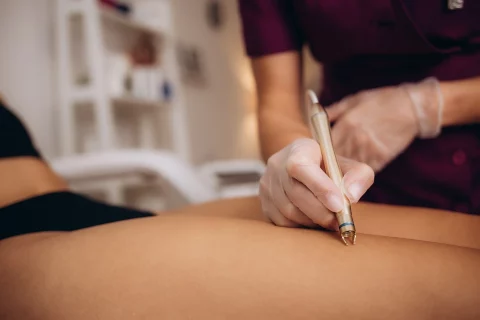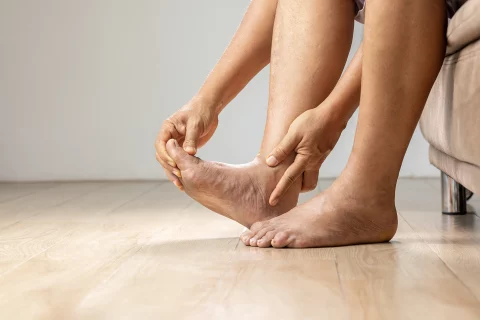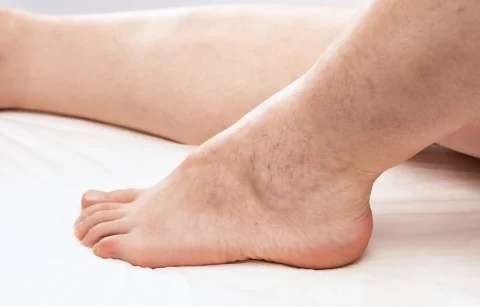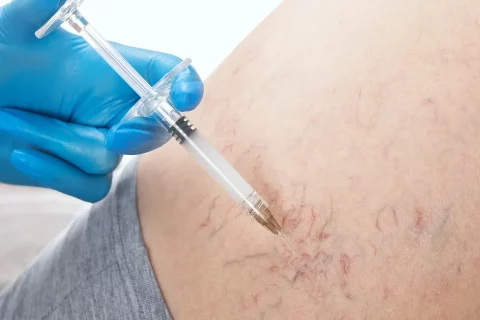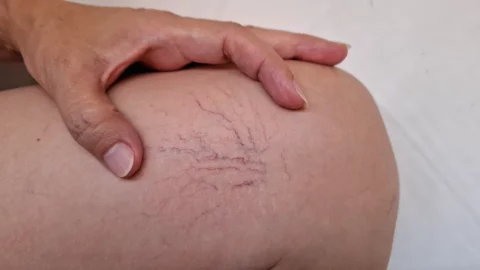How inflammation from vasculitis could potentially lead to the development of spider veins
Spider veins and vasculitis are both vascular conditions, but vasculitis is an autoimmune disease that causes inflammation in blood vessels and can damage organs. Spider veins are enlarged superficial vessels that are typically harmless, but in some cases they may develop due to inflammation from certain types of vasculitis.
What is Vasculitis?

Let’s start with vasculitis, which is the more complex of the two.
Vasculitis refers to inflammation of the blood vessels. It happens when the immune system mistakenly attacks the body’s own blood vessels, causing them to swell and become damaged.
This inflammation can occur in veins, arteries, and capillaries of any size and in any location across the body. Wherever the inflamed blood vessels are located determines which organs are affected and what symptoms occur.
For example, vasculitis in blood vessels of the brain may cause headaches and stroke-like symptoms. Vasculitis in vessels of the lungs could result in cough, shortness of breath, and bleeding.
There are a few types of vasculitis:
- Primary vasculitis has no identified cause.
- Secondary vasculitis occurs due to an underlying condition like an infection, medication side effect, or autoimmune disorder.
The most common triggers for secondary vasculitis include:
- Viral or bacterial infections, such as hepatitis B
- Medications, like antibiotics and NSAIDs
- Autoimmune diseases, including rheumatoid arthritis and lupus
Regardless of cause, the goal of treatment is to reduce inflammation and prevent damage to organs. For primary vasculitis, doctors usually prescribe corticosteroids or other immunosuppressant medications.
For secondary vasculitis, they treat the underlying trigger first. Lifestyle changes like quitting smoking and eating a healthy diet also support vasculitis management.
Vasculitis Symptoms and Complications
The symptoms of vasculitis depend on which blood vessels are affected. Some people experience general, non-specific symptoms like:
- Fever, fatigue, and unexplained weight loss
- Muscle and joint pain or aches
- Skin changes like red spots, sores, or thickened skin over veins
- Headaches, lightheadedness, and confusion
Others may have very specific organ problems based on the location of damaged vessels. For example:
- Brain and nervous system: Headaches, vision loss, numbness, strokes, and aneurysms
- Lungs: Cough, wheezing, shortness of breath, chest pain
- Kidneys: High blood pressure, kidney failure
- Heart: Chest pain, palpitations, shortness of breath
- Eyes: Blurred vision, pain, redness
Without proper treatment, severe vasculitis can even lead to organ failure and be life-threatening. Lower levels of inflammation may initially come and go, with symptom flares followed by periods of remission.
There are also different types of vasculitis, such as:
- Granulomatosis with polyangiitis (GPA)
- Polyarteritis nodosa
- Kawasaki disease
- Behcet’s disease
Each of these has their own typical set of symptoms and potentially associated complications.
How Do Doctors Diagnose Vasculitis?

Diagnosing vasculitis involves reviewing a person’s symptoms, medical history, and conducting physical exams. Doctors will feel for changes in pulses, listen to the heart and lungs, and check the skin for rashes, sores, and thickened areas.
They’ll also run blood and urine tests to look for elevated markers of inflammation and antibodies associated with different vasculitis types.
Additional testing can include:
- Chest x-ray
- CT scan
- Angiogram of the blood vessels
- Ultrasound
- Biopsy of involved organs
Putting together the puzzle pieces from all these assessments allows doctors to determine if vasculitis is present and which blood vessels are affected.
Spider Veins Explained
Now that we’ve covered the basics on vasculitis, let’s switch gears to spider veins. Also called telangiectasias, spider veins appear as fine red or blue blood vessels right under the surface of the skin.
They get their name from their spider web-like shape, with a central vein that branches off into smaller ones. While spider veins can develop anywhere, they most often occur on the legs and face.
What causes them? Spider veins form when the tiny vessels in the skin become dilated and swollen. Factors that can contribute to this include:
- Genetics and family history
- Hormonal changes, like puberty, pregnancy, and menopause
- Aging
- Sun exposure
- Trauma or injury to an area
- Obesity and pressure on veins from weight gain
While unsightly, spider veins don’t typically cause discomfort. In most cases, treatment is sought for cosmetic reasons rather than medical necessity.
Treatments for Spider Veins
When it comes to removing spider veins, there are several options:
Sclerotherapy
This is the standard first-line treatment, especially for spider veins on the legs. It involves injecting a solution into the vein that scars and closes it off. The vessel eventually fades. Several sessions may be needed, but it’s a relatively quick and painless process.
Laser and light treatments
Laser and intense pulsed light therapy can remove smaller facial spider veins. These devices emit targeted wavelengths of energy that heat up and destroy the unwanted veins.
Microphlebectomy
This surgical technique is used for larger damaged surface veins. The vein is removed through tiny incisions in the skin.
Lifestyle measures can also help prevent spider veins from worsening:
- Wearing compression stockings to improve circulation
- Avoiding long periods of standing or sitting
- Maintaining a healthy weight
- Exercising regularly
- Staying hydrated
- Avoiding extended sun exposure
The Link Between Vasculitis and Spider Veins

So how are these two vascular conditions connected? In some cases, they overlap.
For one, certain types of vasculitis specifically affect the tiny capillaries and venules. Inflammation from vasculitis could damage these small vessels enough that they dilate and become visible as spider veins.
Spider angiomas are an example – these are spider vein lesions that may arise secondary to underlying vasculitis. The central arteriole is permanently dilated, appearing as a red dot, while smaller branching veins give it the spider-like shape.
In addition, the same triggers for secondary vasculitis could also independently lead to spider vein formation.
For instance:
- Viral or bacterial infections cause inflammation that could weaken blood vessels.
- Medications like chemotherapy drugs constrict vessels.
- Autoimmune diseases like lupus involve inflammation that could affect vascular health.
- Cancers may indirectly impact circulation and blood vessel integrity.
Lastly, certain lifestyle factors that raise spider vein risk may also exacerbate vasculitis. For example:
- Smoking triggers inflammation and vessel changes.
- Excess sun exposure can damage vessels over time.
- Obesity places pressure on blood vessels.
So while not always directly related, vasculitis and spider veins do overlap in some causes and may co-occur in some people. Proper diagnosis is key.
When to See a Doctor
Not all visible veins indicate an issue needing medical care. Talk to your doctor if you have:
- Sudden onset of many spider veins
- Spider veins accompanied by pain, itching, burning, or swelling
- Extensive spider veins without obvious cause
- Spider veins along with other concerning symptoms
Likewise, get evaluated if you experience potential vasculitis symptoms like unexplained rashes, high fever, fatigue, or organ problems. Diagnostic testing can determine if an underlying vasculitis is to blame.
The Bottom Line

While spider veins and vasculitis both affect the blood vessels, vasculitis is a serious autoimmune condition that can damage organs and be life-threatening. On the other hand, spider veins are typically just a cosmetic nuisance.
In some cases, though, the inflammation from vasculitis can lead to spider vein formation. Shared triggers also link the two conditions.
Appropriate diagnosis by a doctor is important to distinguish between harmless spider veins versus those indicating vasculitis. Consult a dermatologist or rheumatologist to discuss your symptoms and get the right diagnosis and treatment.

